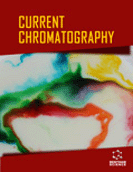Abstract
Background: Current liquid chromatography instruments may yield two-way signals with full spectra collected as a function of time. These signals can be processed to recover chromatographic peaks in case of low resolution in the time order without any peak shape assumption. In Part I of this work, a two-way chromatographic objective function (COF) that incorporates both time and spectral information using diode array detection, based on the multivariate selectivity concept (figure of merit derived from the net analyte signal), was reported. The approach was applied to improve the chromatographic analysis of a mixture of 25 phenolic compounds with appreciable spectral differences, which remained unresolved in the time order.
Objective: Part 2 of this work is aimed to illustrate the usefulness of the two-way COF to reduce the analysis time for compounds exhibiting small spectral differences.
Method: The COF locates experimental conditions where the spectrochromatograms can be recovered with low error, using the combination of the orthogonal projection approach and alternating least squares.
Results: The probe compounds (19 o-phthalaldehyde/N-acetylcysteine amino acid derivatives) were satisfactorily resolved using multi-linear and multi-isocratic gradients of acetonitrile-water, but at too long analysis times. By increasing the elution strength, the analysis time decreased, but producing overlapped peaks. The approach found the experimental conditions where the information for these peaks could be accurately recovered based on their spectral information.
Conclusion: This demonstrates that the developed two-way COF succeeds to find convenient separation conditions for mixtures containing overlapped peaks for compounds exhibiting small spectral differences.
Keywords: Alternating least squares, chromatographic resolution, multivariate selectivity, reduction of analysis time, signal recovery, small spectral differences.
 30
30 2
2

















